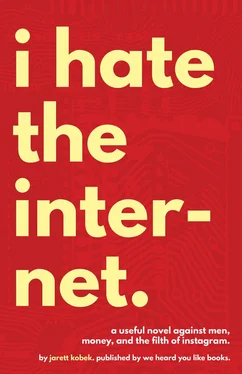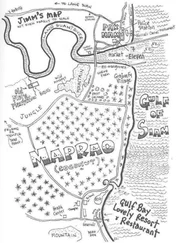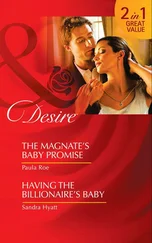Adeline’s friend, the writer J. Karacehennem, whose last name was Turkish for Black Hell, had read an essay called “Generation Why?” by Zadie Smith, a British writer with a lot of eumelanin in the basale stratum of her epidermis. Zadie Smith’s essay pointed out that the questions Facebook asked of its users appeared to have been written by a twelve year old.
But these questions weren’t written by a twelve year old. They were written by Mark Zuckerberg.
Mark Zuckerberg was a billionaire. Mark Zuckerberg was such a billionaire that he was the boss of other billionaires. He was Sheryl Sandberg’s boss.
J. Karacehennem thought that he knew something about Facebook that Zadie Smith, in her decency, hadn’t imagined.
“The thing is,” said J. Karacehennem, whose last name was Turkish for Black Hell, “that we’ve spent like, what, two or three hundred years wrestling with existentialism, which really is just a way of asking, Why are we on this planet? Why are people here? Why do we lead our pointless lives? All the best philosophical and novelistic minds have tried to answer these questions and all the best philosophical and novelistic minds have failed to produce a working answer. Facebook is amazing because finally we understand why we have hometowns and why we get into relationships and why we eat our stupid dinners and why we have names and why we own idiotic cars and why we try to impress our friends. Why are we here, why do we do all of these things? At last we can offer a solution. We are on Earth to make Mark Zuckerberg and Sheryl Sandberg richer. There is an actual, measurable point to our striving. I guess what I’m saying, really, is that there’s always hope.”
Having worked in the belly of the beast, Jeremy Winterbloss understood the comic industry’s traditions of racism and sexism.
Any product not delivered by White men would receive less orders than products offered by White men. Which meant less sales, which meant a smaller audience, which meant less money.
Many people in the comics industry remembered Jeremy. He stood out. Many people in the comic industry remembered the eumelanin in his basal cell layer.
Back in the early 1990s, Jeremy worried that if he and Adeline published Trill under their own names, then it would be seen as a Black book drawn by a White woman.
Which meant less sales, which meant a smaller audience, which meant less money.
Jeremy wanted to be recognized for his contribution but Jeremy also wanted to make money. He wanted to do meaningful work and be paid for it.
In this, he was different than Sheryl Sandberg. He had no interest in advertising baby powder and asking people about their favorite music.
Jeremy devised an imperfect solution to the issues of racism and sexism in the comic book industry. He suggested that both he and Adeline adopt pseudonyms.
The adoption of pseudonyms was another of the comic industry’s time honored traditions. Jack Kirby, who had no eumelanin in the basale stratum of his epidermis and pretty much created the comic book industry, was born Jacob Kurtzberg. He chose his pseudonym to sound less Jewish.
Adeline, who was then suffering from many strange habits including an affected Transatlantic accent and a terminal disinterest in making a statement, agreed with Jeremy’s suggestion.
“Darling,” she asked, “won’t it be simply frightful to pretend that we’re other people?”
Jeremy went with J.W. Bloss. Adeline picked the somewhat more baroque M. Abrahamovic Petrovitch.
Monthly publication of Trill ceased in 1999. A series of unforeseen events, including the collapse of several distributors, made it very difficult for comics creators to self-publish their own work. The money just wasn’t there.
Trill ceased publication at the exact moment when the greater English speaking world became interested in trade paperback collections of comic books.
Sometimes these collections were called graphic novels .
This was a misnomer. The trade paperbacks were not novels and very rarely contained any graphic material.
An example of an actual graphic novel was Les 120 journées de Sodome¸ an Eighteenth Century book written in prison by an obese French nobleman without any eumelanin in the basale stratum of his epidermis.
Like most actual graphic novels, it succeeded wonderfully at being graphic but failed miserably as a novel. It was a book about people in a castle who fuck each other to death while throwing their own shit around like a bunch of caged monkeys.
By contrast, the graphic novels of the comic book industry were mostly Marvel or DC getting new money for old rope by binding together reprints of ancient material.
Typically these graphic novels contained nothing more than images of volleyball sized breasts and Spider-Man smashing Doctor Octopus through a brick wall while saying, “Ol’ sourpus sure made a mistake messing with his friendly neighborhood webhead!”
The trade paperback editions of Trill continued to sell after the final monthly pamphlet was printed. Each year, the trade paperbacks sold a little more than the year before.
Then two things happened in the mid-2000s: (1) On the basis of their success with Bone , a book by a guy named Jeff Smith who didn’t have any eumelanin in the basale strata of his epidermis, Scholastic offered to print color trade paperbacks of Trill, granting access to the voracious children’s and education markets. (2) Don Murphy, a quarrelsome producer of Hollywood films without any eumelanin in the basale stratum of his epidermis, optioned the cinematic rights to Trill.
Unlike many intellectual properties that are optioned by Hollywood producers, Trill was actually financed and turned into a film.
Half of the money came from a Hollywood studio. The rest was raised from private investors, including a very sizeable chunk of change via the Saudi media group Fear and Respect Holdings Ltd.
Fear and Respect was run by His Royal Highness Mamduh bin Fatih bin Muhammad bin Abdulaziz al Saud, who had a small amount of eumelanin in the basale stratum of his epidermis. The principle purpose of Fear and Respect was to invest in new media companies and old media opportunities.
HRH Mamduh bin Fatih bin Muhammad bin Abdulaziz al Saud liked film, and he could see the future. He could see that intellectual properties derived from the comic book industry were on the verge of providing very lucrative revenue streams.
Trill was his first foray into the world of cinema.
He had high hopes.
Adeline and Jeremy were not involved in the filmmaking process, but gave their tacit support by saying nothing against the project. They did not attend the film’s premiere.
The film was computer animated, which meant scores of underpaid technicians in Asian countries spent countless hours working on devices assembled by even lower paid workers in other Asian countries to produce crude replicas of artwork that had cost Adeline about $54 a month in materials.
When the film was released in 2007, it did what Adeline considered a ridiculous amount of business: about $25,000,000.
This was $25,000,000 less than its production budget, which did not include the tens of millions more dollars spent on marketing.
Trill was a flop.
HRH Mamduh bin Fatih bin Muhammad bin Abdulaziz al Saud was sad.
But the publicity was great for sales of the trade paperbacks.
Neither Adeline nor Jeremy had wanted their identities revealed, but another producer of Trill, a man named Joel Silver, let the truth slip during a press conference.
Читать дальше












